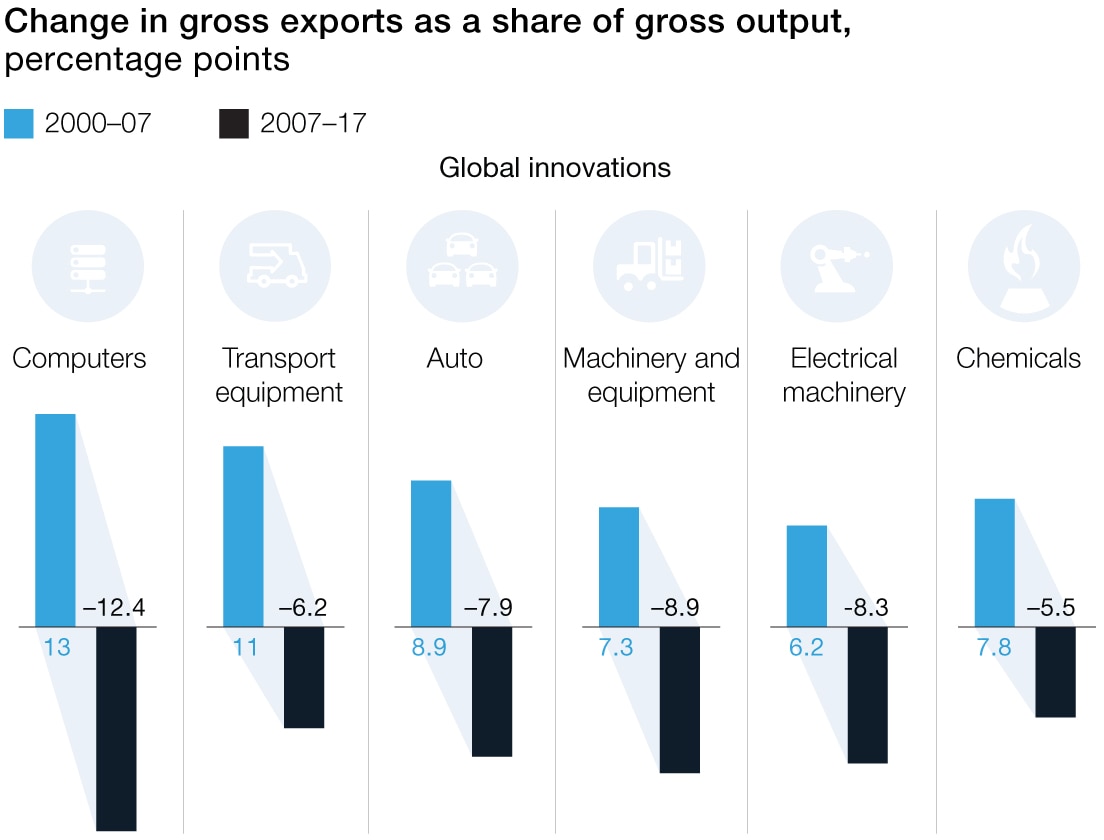| Plus, the future of trade and value chains |
 |
February 15, 2019 |
|
 |
| Our best ideas, quick and curated |
|
|
|
|
| This week, we look at what goes wrong when there is only one woman on a team or in the C-suite, and how companies can change course. Plus, scroll down for why India is such a promising market for international brands, and for reading picks from China expert Gordon Orr. |
|
|
|
| We’ve all read that companies perform better financially when they have a diverse and inclusive leadership. Despite that, many women find they’re still alone in a roomful of men, increasing the odds that they will experience workplace discrimination. |
| According to McKinsey’s latest Women in the Workplace report, 20 percent of women surveyed said they were often the only female in the room or one of very few. The figure is far higher in sectors like technology and engineering, and for women of color. |
| We found that women in unbalanced environments are more likely to have their judgment questioned (49 percent versus 32 percent), to be mistaken for someone more junior (35 percent versus 15 percent), and to be subjected to unprofessional and demeaning remarks (24 percent versus 14 percent). No wonder women get overlooked for promotions. |
| McKinsey and LeanIn.Org studied 64,000 employees and 279 companies in North America, and the resulting statistics show how frustratingly slow progress is toward gender equality in most companies. While nearly as many women as men are now taking white-collar jobs, female representation still diminishes as you move up the corporate ladder. Women make up just one in five C-suite executives. (BTW, at Davos this year only 22 percent of participants were female.) |
| How to break this cycle? On leadership or project teams, group several women together instead of scattering one woman to a team. Review processes for making promotions and filling vacancies to make sure the growing number of women in your company are making their way up. Find them, help them advance, and enlist them in the effort to overcome “onliness.” |
| Finally, make use of the CEO transition period. We found that more than two-thirds of new CEOs replace at least half of the members of their top teams within two years. What a great (and underutilized) time to address the “only” problem. |
|
|
| OFF THE CHARTS |
| Globalization shifts hiding in plain sight |
| Although output and trade continue to increase in absolute terms, trade intensity (the share of output that is traded) has declined in almost all goods-producing global value chains since 2007. See this article’s interactive graphic (static version below) for more. |
 |
|
|
| MORE ON MCKINSEY.COM |
| Why India is looking fabulous for fashion | The country has a rapidly growing middle class and an increasingly powerful manufacturing sector. Here’s what international brands need to know.
|
| Navigating a world of disruption | Step back and think more broadly about both the value-creating opportunities and the intense competitive and societal challenges we all face in this era of technological ferment. |
| Not your grandparent’s infrastructure | The American Society of Civil Engineers gave US infrastructure an overall grade of D+. Five steps can help tackle the country’s backlog of infrastructure maintenance. |
|
|
| WHAT WE’RE READING | Gordon Orr |
|
|
| Billion Dollar Whale, about the scheme to siphon billions from 1MDB, Malaysia’s state-owned investment fund, is my business thriller of the year. It narrowly edged out Bad Blood, John Carreyrou’s chronicle of the dramatic rise and fall of Theranos (which won the Financial Times and McKinsey Business Book of the Year Award). I read Whale cover to cover during a New York–Hong Kong flight. Fantastic research by the authors, Wall Street Journal reporters Tom Wright and Bradley Hope. |
| It was a good year for thought-provoking books about China. Asia’s Reckoning by Richard McGregor walks through a half century of China–Japan relations in masterful fashion, leaving me optimistic that things can and should be better in the years ahead. The Third Revolution by Elizabeth C. Economy offers a fascinating synthesis of China in 2018 under Xi Jinping’s leadership. Henry M. Paulson Jr.’s Dealing with China took me back 25 years to a much less regulated China. |
| If we want to indulge in a little pessimism about the world situation, here are a few of my favorites about where and how things can go wrong. Charles P. Kindleberger’s The World in Depression was first published more than 40 years ago and takes the reader through the incremental and self-interested moves by governments and businesses that led to the Great Depression. The Great Leveler by Walter Scheidel lays out how periods of great inequality have ended with redistribution, but through war. |
| In other media, I frequently listen to the Sinica and the Football Weekly podcasts—one interviewing people in the news in China and the other trying to explain why Arsenal will just never win the Premier League again. |
|
|
|
| BACKTALK |
| Have feedback or ideas? We want to hear from you. |
|
|
|
|


| |